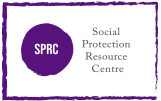Social Protection as a Key to Addressing Disparities
Author: Misbah Rashid Khan (Research Associate)
In recent years, many countries in the world have achieved impressive economic growth rates and made significant progress in reducing poverty. However, despite this progress, social disparities remain a persistent problem in many regions, particularly in developing countries.
In Asia and Pacific, economic growth has been driven largely by rapid industrialization and globalization (ESCAP, U. 2015), which have brought many benefits, including job creation, increased productivity, and higher incomes. However, the benefits of this growth have not been shared equally, and inequality remains a major challenge.
There exist the multidimensional inequalities such as income gap, limited access to education and health care services. Social Protection disparities are significant in Asia and Pacific region. Policymakers and stakeholders classify this approach into three groups of inequalities; inequality of outcome, inequality of opportunity and inequality across different population groups (ESCAP, U. 2015).
Social protection is considered as a key tool in addressing these socio economic disparities (Hujo, K. 2021). However, the governments of these countries are strengthening the social protection coverage.
Pakistan developed its first National Social Protection Strategy (NSPS) in 2008. The aim of this strategy was to reduce poverty and vulnerability of households by raising their income levels (GOP, 2008). In a response to this policy, total expenditures on safety-net programs increased 6 folds from 2006 to 2008 (11 bill- 62 bill). However, studies (Azeem, M. et al. 2019; Awan,M. et al.2022) suggest that social protection has positive impact in reducing household’s vulnerabilities but it is mainly driven by the short term impacts such as flood reliefs programs, pension programs and utility store networks. Implementing social protection program can have multidimensional impacts, including reducing income inequality (Awan,M. et al.2022) and poverty levels and enhanced economic growth.

Source: Economic survey of Pakistan 2018-19
Over the years, there has been a reduction in the household income inequality as indicated by the decreasing Gini coefficient, which can be attributed to the positive progress in the poverty rate of the country. However, the effective implementation of government social protection programs has contributed to the amelioration of poverty (ESP, 2019).
The SP policy of Pakistan is often subjected to multiple challenges (World Bank, 2013; ILO, 2019) such as fragmentation and duplication of safety net programs; limited coverage of programs, which only extend to around 2-3% of the population, despite a poverty rate of approximately 25%; poor targeting of programs; low implementation capacity; inadequate institutional arrangements for a multi-sectoral approach to social protection; and insufficient capacity to provide rapid assistance to those affected by natural disasters. Despite the fact that around 31% of Pakistan’s population lived below the poverty line (ILO, 2019[1]) in 2018, the Benazir Income Support Programme only managed to reach 7.2% of the population. Moreover, only employees within the formal economy are covered by employment-based contributory
[1] https://www.ilo.org/wcmsp5/groups/public/—asia/—ro-bangkok/—ilo-islamabad/documents/publication/wcms_802498.pdf
schemes, (ILO, 2019) leaving those in the informal economy without any form of coverage. As a result, approximately 71.7% of the non-agricultural workforce lacks coverage.
Health shocks are the most important factors that push the vulnerable households into the poverty trap. In Pakistan, healthcare is the sole benefit that is universally provided. Despite this, the quality of healthcare services and access to them differ throughout the country.

Source: ILO,2019
Health indicators are not showing impressive results, for instance in 2019, the frequency of dying from chronic disease; diabetes, cardiovascular, and respiratory disorder was 29.4%, as compared to its neighboring countries India (21.9%), and Bangladesh (18.9%). Further, in International Health Regulation core capacity country’s score was 51.04 while Bangladesh and India scored 77.75 and 95.28 respectively (ILO, 2021[1]). These statistics show that Pakistan needs to focus on the health outcomes by concentrating on the social health protection policies for its population.
[1] https://www.social-protection.org/gimi/RessourcePDF.action;jsessionid=Fdqnv19TCIR-6FfKkUZTz3s9f7MJm4mmQLVwgxP5RFxv6Pb89bxm!-915126135?id=57662

Source: World Development Indicator
Despite the fact that health care system is universal in Pakistan, social health protection system is highly fragmented leading to disparities in access to health service among rich and poor. Therefore, there is a need to formulate coordination structure.
If social programs are abandoned or neglected, it can have adverse effects. This can result in an increase in poverty and inequality, ultimately leading to lower economic growth and pushing further into the trap of underdevelopment.
References
- Azeem, M. M., Mugera, A. W., & Schilizzi, S. (2019). Do social protection transfers reduce poverty and vulnerability to poverty in Pakistan? Household-level evidence from Punjab. The Journal of Development Studies, 55(8), 1757-1783.
- Awan, M. S., Sánchez-Juárez, I., & Waqas, M. (2022). Social protection expenditures, poverty, inequality, and economic growth in Pakistan. Paradigma económico. Revista de economía regional y sectorial, 14(1), 57-75.
- ESCAP, U. (2015). Time for Equality: The Role Of Social Protection In Reducing Inequalities In Asia And The Pacific.
- Economic Survey of Pakistan, 2018-19
- Government of Pakistan. (2008). National social protection strategy. Islamabad: Centre for Poverty Reduction and Income Distribution, Planning Commission.
- Hujo, K. (2021). Social protection and inequality in the global South: Politics, actors and institutions. Critical Social Policy, 41(3), 343-363.
- World Bank (2013). “Social protection in Pakistan”. <https://www.worldbank.org/en/country/pakistan/brief/social-protection-in-pakistan>.
- World Health Organization, 2. (2020). Universal health coverage partnership annual report 2019: in practice: bridging global commitments with country action to achieve universal health coverage.

